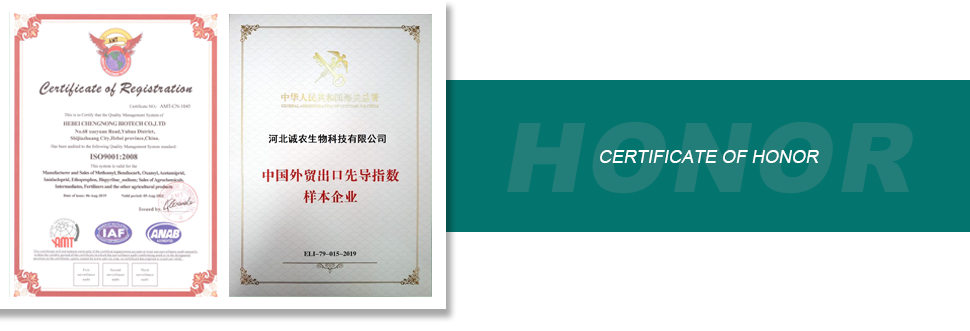
Oct . 22, 2024 08:15 Back to list
Comparative Analysis of Chlorothalonil and Thiophanate Methyl Agricultural Products and Their Applications
Chlorothalonil and Thiophanate-Methyl Insights into Two Essential Fungicides
In the realm of agricultural practices, the use of fungicides plays a pivotal role in safeguarding crops against various fungal diseases that threaten yields and quality. Among the plethora of fungicides available today, chlorothalonil and thiophanate-methyl stand out as two of the most widely utilized compounds. Both of these fungicides are integral to effective crop management, yet they possess distinct characteristics, modes of action, and applications that make them essential tools for farmers across the globe.
Chlorothalonil, a broad-spectrum fungicide, belongs to the class of chlorinated aromatic compounds. It was first introduced in the 1960s and has since become a staple in agricultural practices. Its effectiveness lies in its ability to control a wide range of fungal pathogens, including those that cause leaf spots, blights, and molds in various crops such as potatoes, tomatoes, and cucumbers. Chlorothalonil functions by disrupting the cellular processes of fungi, particularly by interfering with their respiration and cell membrane integrity. This disruption leads to the eventual death of the fungal cells, thereby preventing the spread of diseases.
Chlorothalonil and Thiophanate-Methyl Insights into Two Essential Fungicides
In contrast, thiophanate-methyl is a systemic fungicide that falls under the category of benzimidazole compounds. It is particularly effective against certain fungal pathogens, including those that cause root rot, gray mold, and powdery mildew. Upon application, thiophanate-methyl is absorbed by the plant and translocated throughout its tissues, providing protection not only on the surface but also within the plant. This systemic action allows for enhanced disease control, particularly in crops that may be vulnerable to penetration by pathogens.
chlorothalonil or thiophanate methyl product

Thiophanate-methyl works by inhibiting fungal cell division, specifically targeting the formation of microtubules during mitosis. By preventing proper cellular division, the fungicide effectively halts the growth and propagation of fungal cells. However, one challenge with thiophanate-methyl is the potential development of resistance among certain pathogens. Therefore, it is crucial for farmers to employ integrated pest management (IPM) strategies that involve rotating fungicides with different modes of action to mitigate this risk.
Both chlorothalonil and thiophanate-methyl are valued not only for their efficacy but also for their economic impact. By preventing crop losses due to fungal infections, these fungicides contribute significantly to the sustainability and profitability of agricultural operations. Farmers can achieve higher yields and improved crop quality, thereby ensuring food security and meeting consumer demand.
However, the use of these chemical fungicides is not without controversy. Concerns regarding environmental impact and human health have prompted regulatory bodies worldwide to assess their safety and usage guidelines. Chlorothalonil, for instance, has faced scrutiny due to its potential effects on non-target organisms and water quality. As a result, many countries have placed restrictions on its application rates and timing. Similarly, while thiophanate-methyl remains widely used, its classification and regulations may evolve as ongoing studies continue to evaluate its impacts.
In conclusion, chlorothalonil and thiophanate-methyl are two essential fungicides in modern agriculture, each with unique properties and strengths. By understanding their modes of action and proper application strategies, farmers can effectively manage fungal diseases while considering environmental and health implications. As agriculture continues to evolve and innovate, the responsible use of these fungicides will be crucial for ensuring sustainable crop production and food security for future generations.
-
Herbicide Mesotrione: Advanced Herbicide Solutions for Corn Field Weed Control
NewsJul.12,2025
-
Buy Penoxsulam Herbicide - Selective Weed Control Solution for Lawns & Crops
NewsJul.08,2025
-
Malathion and White Oil Effective Insecticide for Citrus & Ornamentals
NewsJul.08,2025
-
Best Section Fungicide Solutions Effective Carbendazim & Copper Fungicides for Citrus Trees
NewsJul.08,2025
-
Types of Herbicides Explained Discover 5 Types of Selective Herbicides for Effective Weed Control
NewsJul.07,2025
-
Buy Bifen Chemical – Safe Termiticide for Dogs & Effective Pest Control Solutions
NewsJul.07,2025
